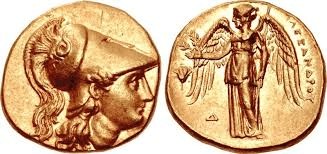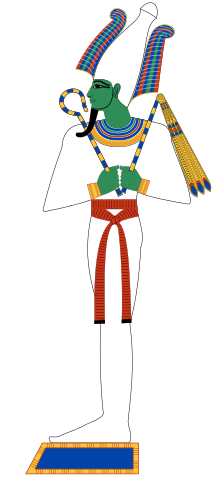Define the term Chronological Order.
Chronological Order: organised from beginning to end (or earliest to latest) (e.g. 100, 200, 300)
What is a Pharaoh?
Pharaoh: the Egyptian name for king.
Who was the emperor responsible for the unification China?
Qin Shi Huang was the emperor that unified China.
800 Terracotta Warriors were built. True or False?
False.
8000 Terracotta Warriors were built.
What is a source?
Something that provides us with historical information
What is the difference between a primary source and a secondary source?
Primary Source: A source from the time or from personal experience.
Secondary Source: A source from after the event being described
What was the only organ left inside the body after the mummification process?
The heart was the only organ left inside the body after the mummification process.
What is a dynasty?
Dynasty: Where members of the same family rule over a region for an extended period of time.
356 CE is in the 4th century.
True or False?
True.
356 CE is in the 4th century

Is this a primary or secondary source?
An ancient coin is a primary archaeological source.
What do the abbreviations CE and BCE stand for?
DOUBLE POINTS: What are the old abbreviations and their meaning?
CE - Common Era
BCE - Before Common Era
AD - Anno Domini
BC - Before Christ
Why was the River Nile so important to Ancient Egypt? (three reasons)
Importance of the River Nile:
- Fertile soil
- Water supply in a mostly desert country
- Made transportation easier
- Mud used to make bricks
What were the three major belief systems of Ancient China?
The three major belief systems of ancient China were Buddhism, Confucianism and Taoism
The Silk Road was a single, long road that connected the East to the West.
False.
The Silk Road was a series of trade routes that connected the East and West.
What does strata refer to in archaeology?
DOUBLE POINTS: What is the study of strata known as?
Strata refers to the layers in an archaeology site that reflect different historical time period. The study of this strata is known as stratigraphy.
How is an archaeologist different to a historian?
Archaeologists are focused on physical remains (i.e. archaeological sources) whereas historians typically focus on written sources.
What were the jars called that stored organs during mummification?
Canopic jars
What are two achievements and two negative actions that Qin Shi Huang did?
Qin Shi Huang
Achievements:
- Great Wall of China
- United China
- Universal language and writing
- Standardised weights and measures
Negative actions:
- Killed 700,00 workers who built his mausoleum
- Burned historical and religious books
- Buried scholars alive
Only males were educated in Ancient Egypt. True or False?
False.
While different from that of boys, (mainly wealthy) girls were also given an education in Ancient Egypt.
Who was the god of the deceased in Ancient Egypt (he was also the father of Horus)?

What does the term bias mean?
Bias refers to a one-sided or unfair perspective based on personal beliefs.
Explain the roles of three different social classes in Ancient Egypt
Pharaoh: acted as a God, creating laws, leading the army, controlling the people
Government Officials/Nobles: collected taxes, supervised work projects, etc
Scribes: Reading and writing
Soldiers: fighting for Egypt, supervised farmers and builders during peacetimes
Merchants/Artisans: made and sold jewellery, pottery, papyrus products, tools, and other useful things.
Slaves and Peasants: serve their masters, work on the farms, work on building projects
Outline the key features of the ONE of the three belief systems of Ancient China.
Taoism: Yin and Yang, people should be one with nature, everything in the universe is balanced
Confucianism: treating others with respect, belief in a strong government, importance of family
Buddhism: Life involves a cycle of rebirth (reincarnation), meditation, Karma, Nirvana
The person responsible for writing and keeping records in ancient Egypt was known as the scarab.
True or False?
False.
The person responsible for writing and keeping records was known as the scribe.
Outline TWO reasons why the Ancient Egyptians practised mummification.
Reasons for mummification:
- To maintain ‘Ma’at or divine order in the universe
- Deceased pharaoh could live on in the afterlife
- To satisfy the gods
What is the difference between an objective and subjective viewpoint?
Objective: an opinion based on facts
Subjective: an opinion based on personal feelings or emotions
Who is this Ancient Egyptian God and what was their role/purpose?

Anubis was the ancient Egyptian God of embalming and the dead.
What were the four natural barriers that protected China?
China's natural barriers:
- Gobi Desert
- Himalayan Mountains
- Tibetan Plateau
- Pacific Ocean
Ancient China developed due to the presence of one major river. True or False?
False.
Ancient China developed due to the presence of several major rivers.
During which dynasty were the Terracotta Warriors created?
Put the following steps in an archaeological dig in correct order:
Excavation of historical materials
Locate the site
Survey the site
Begin digging
Organisation of site into sections and layers
Archaeological dig steps:
1. Locate the site
2. Survey the site
3. Begin digging
4. Organisation of the site into layers (box-grid)
5. Excavation of historical materials
What were the three seasons of ancient Egypt?
Seasons of Ancient Egypt:
Akhet: the flooding season
Peret: the planting season
Shemu: the harvesting season
Identify the roles of the following social classes in Ancient China:
Shang
Shi
Gong
Nong
BONUS 200 POINTS: Place them in the correct order.
Shi: Nobles and government officials
Nong: Farmers
Gong: Artisans and craftspeople
Shang: Traders and merchants
The River Nile flows south from Lower to Upper Egypt. True or False?
False.
The River Nile flows north from Upper to Lower Egypt.
What is the Nile Delta?
Nile Delta: The part of the Nile where it spreads out and drains into the Mediterranean Sea